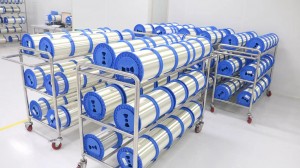Environmental Requirements for Fiber Optic Warehouses:
Ensuring the longevity and optimal performance of fiber optic cables begins long before they are deployed in the field. The environment within a warehouse plays a critical role in preserving the delicate nature of these high-tech components. Strict adherence to environmental controls regarding temperature, humidity, dust, and light is paramount to prevent degradation and ensure reliable operation.
Climate Control: A Stable Environment is Key
Fiber optic cables are sensitive to extremes in temperature and moisture. Therefore, a climate-controlled warehouse is essential.
Temperature: The generally accepted storage temperature range for most fiber optic cables is between -40°C and +70°C (-40°F to 158°F). Maintaining a stable temperature within this range is crucial to prevent the expansion and contraction of cable materials, which can cause micro-cracks or stress on the optical fibers.
Humidity: High humidity can lead to moisture ingress, potentially affecting the cable’s components over time. For indoor-rated cables, a maximum relative humidity of 60% is a common recommendation. Keeping the environment dry prevents the risk of condensation and the growth of mold or fungus, which can degrade cable jackets and other materials.
The Unseen Enemy: Dust and Contaminant Control
While specific quantifiable limits for dust particles in a warehouse are not commonly standardized, maintaining a clean, low-dust environment is a critical best practice.
The primary concern with dust and other airborne contaminants is the potential for them to settle on the end-faces of the fiber optic connectors. Even microscopic particles of dust, oil, or other debris can obstruct the light path, leading to signal loss, increased reflectance, and potentially permanent damage to the connector.
Therefore, warehouses should be designed and maintained to minimize dust generation and circulation. This includes:
Regular cleaning of the storage facility.
Storing cables in their original, sealed packaging for as long as possible.
Ensuring that protective dust caps remain on all connectors until the moment of installation.
Guarding Against the Light: UV Protection
Ultraviolet (UV) radiation from direct sunlight can degrade the protective jacketing materials of fiber optic cables, making them brittle and susceptible to cracking. This is particularly true for indoor-rated cables that are not designed for sun exposure.
The most effective method for UV protection is to store all fiber optic cables indoors in a windowless warehouse or in an area shielded from direct sunlight. For cables with outer jackets that are not black, which typically indicates the inclusion of carbon black for UV resistance, this is especially critical.
Physical Integrity: Proper Handling and Storage Practices
Beyond environmental controls, the physical handling and storage of fiber optic cables are equally important.
Cable Reels: Reels should always be stored in an upright position on a flat, stable surface to prevent the cable from being crushed under its own weight. Stacking reels on their sides can cause a “flat spot” and damage the fibers.
Bending Radius: Fiber optic cables have a minimum bend radius that should never be exceeded. Bending a cable too tightly can cause micro-fractures in the glass fiber, leading to signal degradation or complete failure.
No Heavy Loads: Nothing should be stacked on top of stored fiber optic cables or their reels.
Avoid Chemical Exposure: The warehouse should be free from chemical fumes or spills that could degrade the cable jacketing material.
By meticulously controlling these environmental factors and adhering to proper handling procedures, the integrity of fiber optic cables can be preserved, ensuring they are ready for reliable, high-performance deployment in our increasingly connected world.
Post time: Aug-11-2025


